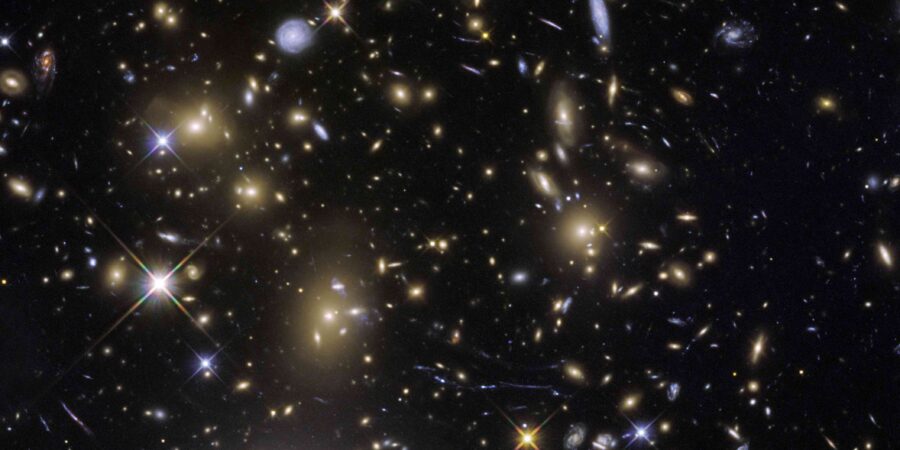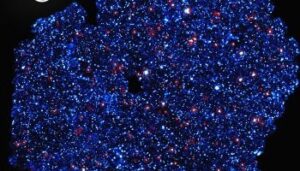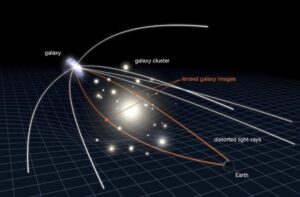
We do study galaxy clusters, which are composed of up to thousands of galaxies living in a virialized structure. They constitutes the nodes of the cosmic web and carry informations about structure formation and evolution, as well as the underlying cosmological models.
These studies are observational (visible light, X-ray, SZ effect…) and theoretical (numerical simulations).
We are using space and ground based telescopes, as well as local and national supercomputers.
-
X-ray
Clusters of galaxies are massive galaxy assemblies, hosting enormous gas reservoirs. Their gas temperature is so high that X-ray emissions are generated.
These structures are crucial for astronomers as their building is strongly dependent on dark matter and dark energy. Their detection in X-rays at different stages of the Universe history then allows to constrain cosmological models. Despite the fact that these high energy radiations are absorbed by the atmosphere, one can detect clusters from their X-ray emission from space, with X-ray observatories. We therefore use such satelites, as XMM-Newton or Chandra to characterize them.
First, the XXL survey, the largest ever XMM allocation, started to study these cosmic beats in 2011, in coordination with ESO and other observatories. The XXL survey primary goal is to build a sample of ~500 clusters of galaxies, up to redshifts corresponding to the Universe half-age.
We are also leading studies on strategical galaxy structures in these high energy domains. This allows us to tackle the question of their building phase by a Chandra/XMM combined approach for peculiar populations as fossil groups, hyper-massive clusters, or fusion-phase clusters.

-
Gravitational Lensing
Given its mass, a galaxy cluster locally deforms space time, so that the light coming from background galaxies is bent: this is called gravitational lensing.
If the light passes through the outskirts of the cluster, their trajectory is slightly deviated and we can observe a statistical deformation of the shape of the background galaxies, the “weak lensing” regime. It allows to probe the cluster mass distribution from the centre up to the outskirts.
If the light passes through the core of the cluster, multiple images can form, the “strong lensing” regime which probes the mass in the core of the cluster.
We cultivate at LAM an expertise in these fields which is well recognized internationally. In particular we develop the Lenstool software which is widely used by our community.
We are using strong lensing to produce maps of the mass distribution in the cluster core and weak lensing for statistical studies.
We are currently working in the following projects: Hubble Frontier Fields, BUFFALO, DESI …

-
Cosmological probes
Galaxy clusters can be used as cosmological probes.
On large surveys, one can study the mass function.
On individual clusters, strong lensing mass modelling allows to constrain cosmological parameters.




